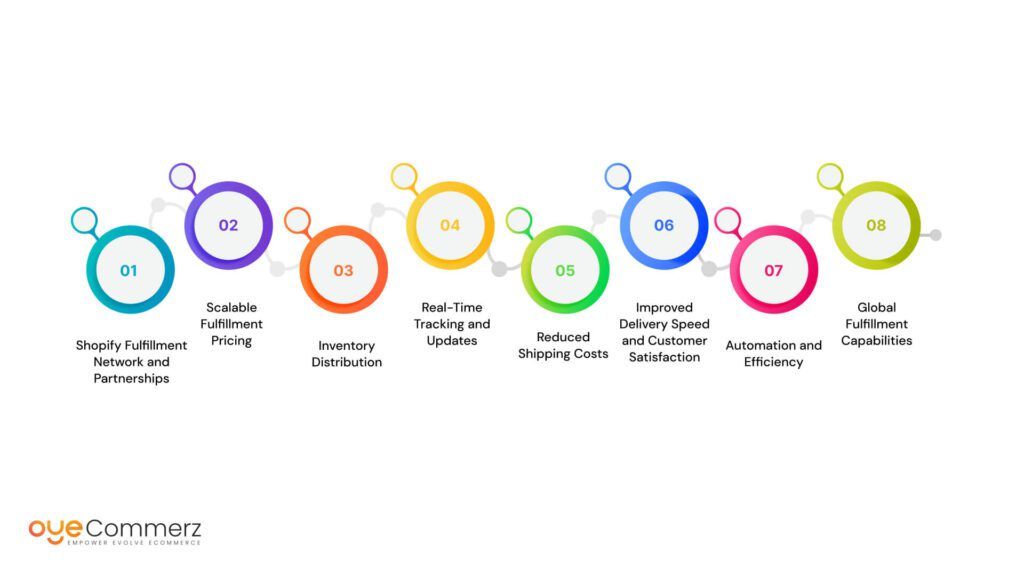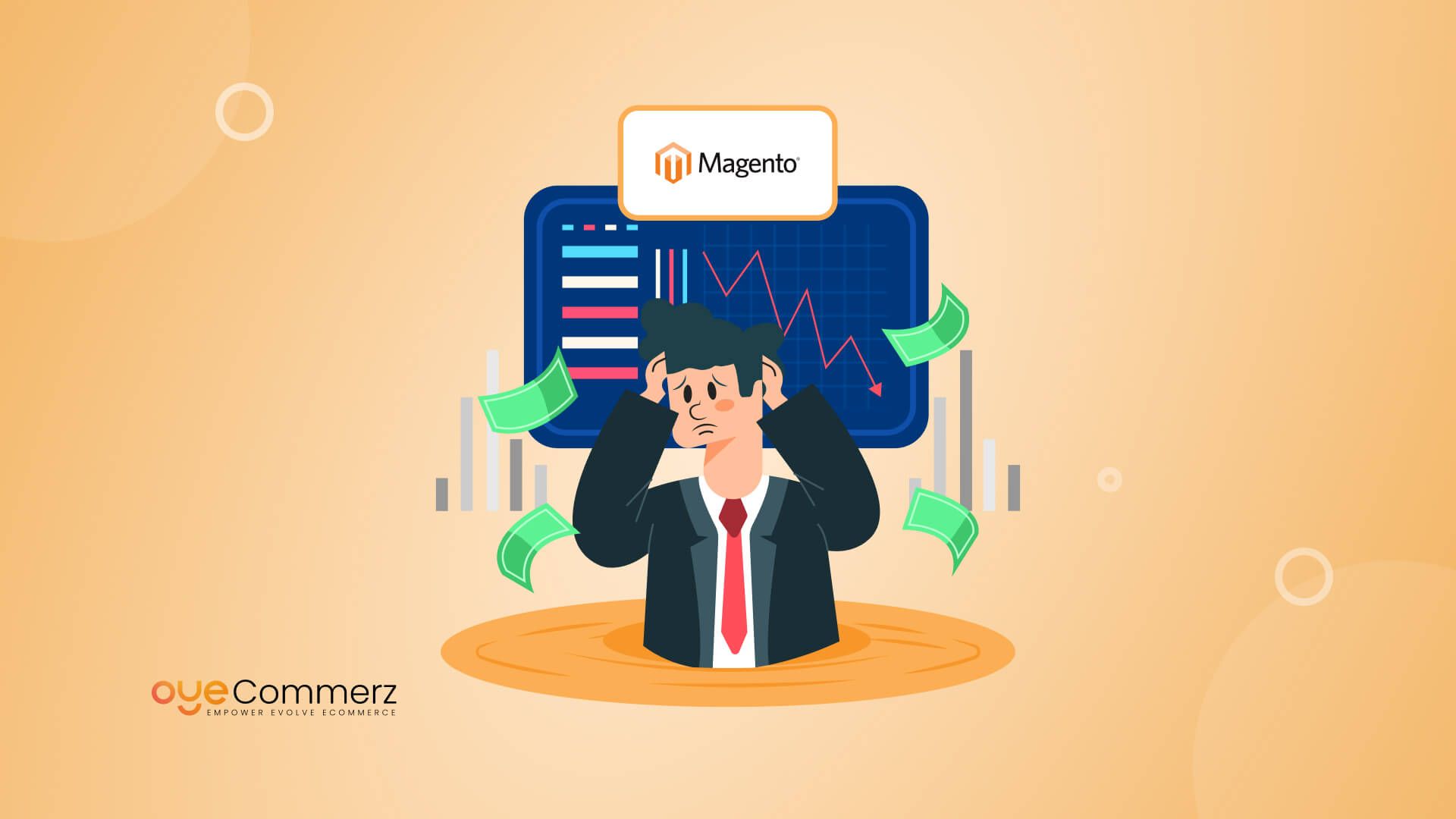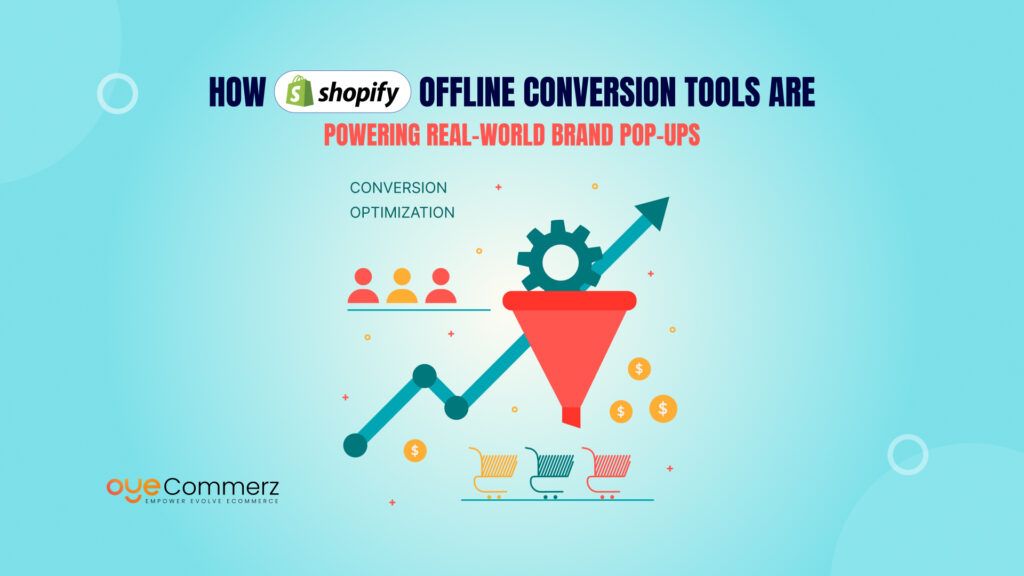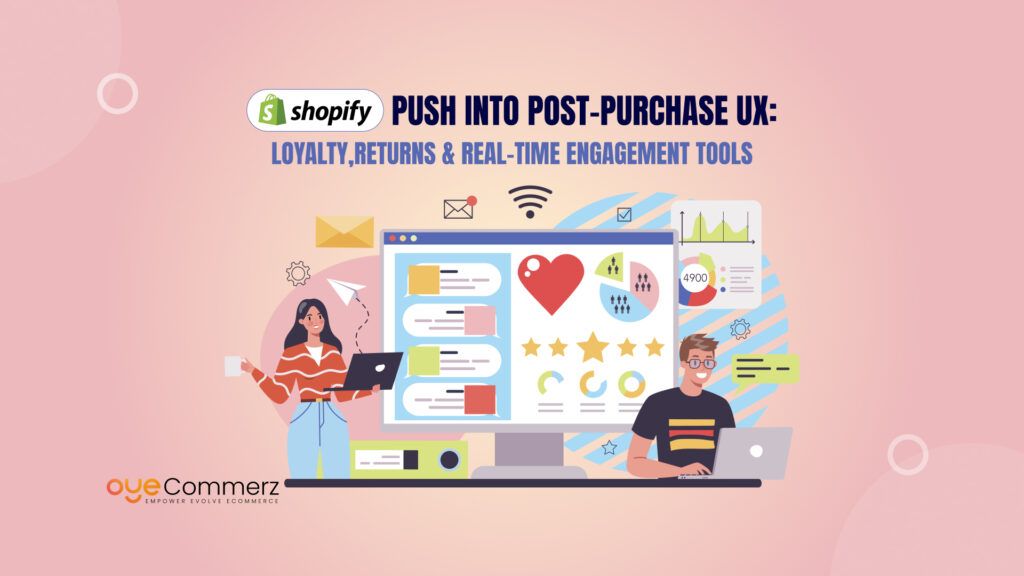Did you know that the average Total Cost of Ownership (TCO) for Magento can be up to $30,000 annually, with additional costs for hosting, development, and maintenance? From expensive hosting to ongoing maintenance, many businesses find their budgets stretched thin while still struggling with performance and scalability issues.
Shopify is a streamlined, all-in-one platform designed for growth and affordability. Shopify fulfillment pricing, effortless updates, and advanced fulfillment options make it beneficial for businesses ready to leave behind the headaches of Magento.
If you’re tired of high costs and complicated setups, it’s time to discover how Shopify can simplify your operations and boost your bottom line. Make the switch to Shopify today and experience eCommerce that works for you.
Table of Contents
ToggleMagento's High TCO: A Deeper Dive
Running a Magento store can quickly become expensive, with costs often exceeding initial expectations. Let’s break down the key contributors to its Total Cost of Ownership (TCO) so you can better understand where your money goes.
1. Initial Costs
Licensing Fees: While Magento Open Source is free, Magento Commerce (Adobe Commerce) comes with significant licensing fees, starting at $22,000 per year for smaller businesses and increasing with revenue.
Hosting and Server Costs: Magento requires self-hosting, which can cost anywhere from $80 to over $1,000 per month depending on the size and traffic of your store.
Theme and Extension Costs: Custom themes can cost between $1,000 and $5,000, while premium extensions range from $60 to several hundred dollars each. The more features you need, the higher the upfront investment.
2. Ongoing Costs
Development and Maintenance: Magento stores require skilled developers for updates, bug fixes, and customizations. Developer rates range from $50-$200 per hour, leading to annual costs that can exceed $60,000 for medium-sized stores.
Security Updates and Patches: Frequent updates are necessary to protect against vulnerabilities. These updates often need expert implementation, adding to the overall costs.
Marketing and SEO Costs: Effective eCommerce marketing strategies, including SEO optimization, require third-party tools or professional services, adding $500-$2,000 per month on average.
Payment Processing Fees: Magento doesn’t include a built-in payment gateway, so you’ll need third-party integrations, which often come with additional transaction fees.
3. Hidden Costs
Time and Resources for Setup and Customization: Magento’s flexibility is its strength, but it requires significant time and technical resources to customize and optimize. This can slow down time-to-market for your store.
Potential Downtime and Lost Revenue: Without proper maintenance, technical issues can cause site downtime, leading to lost sales and a poor customer experience.
Complex Integration with Third-Party Services: Integrating Magento with tools for CRM, ERP, or analytics often involves additional development work, increasing costs and complexity.
While Magento offers extensive customization and scalability, its high TCO can strain resources, particularly for small- and medium-sized businesses. If these costs are impacting your growth, platforms like Shopify offer more predictable and affordable pricing with built-in features that eliminate many of these expenses.
Real-Life Impact of High TCO on Businesses
High operational costs, like those often associated with running a Magento store, can significantly affect a business’s growth and profitability. Here’s how:
1. Cash Flow Issues
When a large chunk of your budget is tied up in hosting, development, and maintenance, it leaves less room for other critical investments like marketing, product development, or team expansion. This can stifle growth, especially for small- and medium-sized businesses that rely on efficient cash flow to stay competitive.
2. Slower Fulfillment
High TCO often means fewer resources are available to invest in operational efficiencies like inventory management or fulfillment systems. Delayed fulfillment can lead to missed sales opportunities, especially during peak seasons, and tarnish your brand’s reputation.
3. Reduced Customer Satisfaction
When operational costs are high, businesses may cut corners on user experience enhancements, such as faster site performance, modern design updates, or personalized customer support. Additionally, potential downtime or security vulnerabilities on a Magento store can result in frustrated customers who may take their business elsewhere.
4. Difficulty Scaling
Magento’s high TCO limits a business’s ability to scale. The resources needed for platform upgrades, regular security patches, and integration with other tools can overwhelm the team. As a result, businesses often fail to expand their operations, enter new markets, or implement the latest technologies that could drive growth. This stagnation can hinder long-term success, especially as competitors move forward with more agile, cost-effective solutions.
5. Increased Risk of Technical Debt
Maintaining a Magento store often requires continuous updates, patches, and integrations, which come with recurring costs. Over time, this can accumulate into “technical debt,” where businesses must continually invest in resolving issues rather than improving or innovating. This creates a vicious cycle that consumes valuable resources and limits flexibility, preventing the business from adapting to changing market conditions or customer demands.
High operational costs aren’t just about money; they can slow your entire business down. For businesses looking to streamline operations and focus on growth, platforms like Shopify provide a cost-effective alternative with built-in tools and lower maintenance requirements.
How Shopify Fulfillment Pricing is Beneficial For You?
Switching to Shopify can help businesses save money and simplify their operations. Let’s explore why Shopify stands out compared to Magento.

1. Predictable and Affordable Pricing
Shopify offers straightforward pricing plans, starting at $39 per month for basic features and scaling up for larger stores. Unlike Magento, where costs for hosting, development, and extensions can add up to $30,000 or more annually, Shopify’s all-inclusive pricing means you can budget more effectively.
2. Built-in Hosting and Security
With Shopify, hosting and security are included in your subscription. This eliminates the need for separate hosting services or managing your own server, which is required with Magento. Shopify also provides automatic SSL certificates and compliance with PCI standards, ensuring your store is secure without extra costs.
3. Simplified Management with Automated Updates
Shopify handles updates automatically, so you don’t need a technical team to manage or install them. Magento, on the other hand, requires developers to apply updates and patches, which adds to ongoing expenses and effort.
4. Access to a Wide Range of Features Without Additional Costs
Shopify provides a wide array of built-in features, such as a payment gateway, marketing tools, and themes, without requiring additional extensions. In contrast, Magento often requires you to purchase and install extensions to access similar functionalities, which can increase costs significantly.
5. Cost Comparison Example
Imagine a medium-sized business with $1 million in annual revenue:
- Magento: Hosting costs could be $12,000/year, development and maintenance another $20,000/year, and extensions add $5,000/year, leading to a TCO of $37,000+ annually.
- Shopify: Using the Shopify Plus plan at $2,000/month, the total cost would be $24,000 annually, and this includes hosting, updates, and most features.
Shopify’s cost-effective structure, built-in features, and ease of management make it a game-changer for businesses looking to reduce expenses and focus on growth. Ready to make the switch? Let’s talk about your options!
Shopify Fulfillment Pricing Advantages
Shopify’s fulfillment network and pricing model are designed to help businesses save money on shipping while scaling their operations. Here’s how it works:

1. Shopify Fulfillment Network and Partnerships
Shopify partners with a network of fulfillment centers, including big names like Fulfillment by Amazon (FBA) and ShipBob. These partnerships enable Shopify store owners to tap into advanced shipping and logistics solutions without the need to manage warehouses themselves.
These fulfillment centers are strategically placed across the U.S. and globally, allowing for faster delivery times and cost-effective shipping rates. With Shopify Fulfillment, you can store your products in multiple locations, reducing shipping distances and lowering costs.
2. Scalable Fulfillment Pricing
Shopify’s fulfillment pricing is designed for businesses of all sizes. Whether you’re just starting out or scaling up, you can choose from different fulfillment options that fit your needs. Shopify charges competitive rates based on your shipping volume, allowing you to take advantage of bulk shipping discounts as your business grows.
As your business scales, Shopify’s automated tools adjust to manage order volumes efficiently, and their integrated network ensures faster delivery with lower costs, particularly when shipping internationally.
3. Inventory Distribution
Shopify makes it easy to distribute inventory across multiple fulfillment centers. This helps speed up shipping times by storing products closer to your customers. For example, if you sell products to both U.S. and Canadian markets, Shopify can store items in facilities near both regions, reducing cross-border shipping fees and delivery delays
4. Real-Time Tracking and Updates
Shopify’s fulfillment network offers real-time tracking for every order. Customers can track their packages directly from your store, improving transparency and customer satisfaction. Shopify automatically updates order statuses, so you don’t have to manually track each shipment
5. Reduced Shipping Costs
By leveraging Shopify’s partnerships with major carriers like UPS, DHL, and USPS, store owners can access discounted shipping rates that lower costs compared to individual arrangements. This is especially beneficial for small- to medium-sized businesses looking to scale without the overhead of negotiating shipping deals on their own
Shopify’s fulfillment network and pricing structure offer businesses the flexibility to scale operations while keeping shipping costs manageable. The ability to distribute inventory, access real-time tracking, and take advantage of bulk shipping rates makes Shopify a great choice for cost-effective growth.
6. Improved Delivery Speed and Customer Satisfaction
By utilizing Shopify’s network of fulfillment centers and distribution strategies, businesses can drastically improve delivery times. Faster delivery is essential for maintaining customer satisfaction, especially in eCommerce where customers expect quick turnaround times. With products stored closer to their customers, Shopify helps ensure timely deliveries, which can result in better customer retention and loyalty.
7. Automation and Efficiency
Shopify’s fulfillment network automates many aspects of the fulfillment process. Once an order is placed, Shopify automatically processes it through the appropriate fulfillment center, picking, packing, and shipping it directly to the customer. This minimizes human error and increases operational efficiency, freeing up time for business owners to focus on other key areas like marketing or product development.
8. Global Fulfillment Capabilities
For businesses looking to expand internationally, Shopify’s fulfillment network provides a robust infrastructure that supports global shipping. Whether you’re shipping to the U.S., Europe, or other international markets, Shopify’s network can handle the logistics. Its partnerships with global carriers ensure that businesses can offer competitive rates and faster delivery times, while also managing the complexities of international shipping.
Shopify’s fulfillment network and pricing model offer businesses significant advantages in reducing operational costs, improving delivery speed, and ensuring scalability. The ability to distribute inventory, access real-time tracking, and take advantage of discounted shipping rates makes Shopify a powerful choice for businesses looking to grow cost-effectively.
How to Smoothly Transition from Magento to Shopify
Making the switch from Magento to Shopify can feel overwhelming, but with the right strategy and tools, it can be a smooth and efficient process. Here’s a guide to help you transition seamlessly.
1. Data Migration
Transferring Product Information, Customer Data, and Order History
Moving your existing product information, customer data, and order history from Magento to Shopify is a crucial step. You’ll need to ensure all your data is properly transferred so you don’t lose valuable information. Fortunately, there are tools and services available to make this process easier, such as Shopify’s Migration Tools or third-party services like Oyecommerz.
2. Theme and Design Customization
Choosing a Suitable Shopify Theme
Once your data is transferred, it’s time to select a theme for your Shopify store. Shopify offers a wide variety of professional themes both free and paid that can be tailored to your brand’s needs. Browse the Shopify Theme Store to pick a theme that suits your store’s style and functionality.
Customizing the Theme to Match Your Brand’s Look and Feel
With Shopify, customizing your theme is simple and doesn’t require extensive coding knowledge. Use the built-in theme editor to adjust colors, fonts, and layout to ensure your site reflects your brand’s identity. If you need more advanced customizations, Shopify’s Experts can assist.
3. App Integration
Identifying Essential Apps for Marketing, Analytics, and Other Functionalities
Shopify’s App Store offers thousands of apps to enhance your store’s functionality. Some key categories to consider include marketing, analytics, inventory management, and customer service. For example, you can integrate apps like Klaviyo for email marketing, Google Analytics for tracking, and Oberlo for dropshipping.
Integrating These Apps Seamlessly into the Shopify Store
Once you’ve identified the right apps, integrating them into your store is straightforward. Most apps are plug-and-play, meaning they’ll work seamlessly with your Shopify setup. Simply install the app from the Shopify App Store and follow the on-screen instructions for configuration.
4. Redesigning the Checkout Process
Optimizing the Checkout Flow for a Smoother Customer Experience
Shopify offers a streamlined checkout process that can help boost conversions. However, it’s important to optimize this flow by reducing unnecessary steps. Shopify allows you to customize fields, streamline payment methods, and offer guest checkout options.
Implementing Strategies to Reduce Cart Abandonment
Cart abandonment is a common issue in eCommerce. Shopify provides tools like abandoned cart recovery emails, which can automatically remind customers of their pending purchases. You can also add live chat or offer limited-time discounts to encourage customers to complete their purchases.
5. Testing and Quality Assurance
Before launching your new Shopify store, it’s crucial to thoroughly test the site to ensure everything works smoothly. This includes checking data integrity (products, customer details, and order histories), theme responsiveness (across different devices), and app integrations. Shopify allows you to perform tests by placing test orders and reviewing functionality. Additionally, ensure your checkout flow, payment gateways, and shipping settings are properly set up to avoid any surprises after going live.
You can also use Shopify’s Shopify Compass or partner with experts like Oyecommerz to guide you through the testing phase and make sure your store is ready for customers
Transitioning from Magento to Shopify doesn’t have to be a hassle. With the right tools, a well-planned approach, and proper customization, you can quickly and easily migrate to Shopify, improve your store’s performance, and enhance the customer experience.
Ready to Make the Switch from Magento to Shopify?
At Oyecommerz, we specialize in making your Migration from Magento to Shopify seamless and stress-free. With our expert guidance, we’ll help you transfer your data, customize your theme, and integrate essential apps so you can focus on growing your business.
Get in touch with us today to start your smooth transition to Shopify and unlock new possibilities for your eCommerce success!
Ready to Migrate to Shopify?
Let Us Help You
Conclusion
Switching from Magento to Shopify offers businesses a wealth of advantages, from reduced costs and predictable pricing to streamlined management and scalability. With Shopify’s built-in features, seamless integrations, and simplified shopify fulfillment pricing options, you can focus more on growing your business and less on maintaining complex systems.
By making the switch today, you’ll not only lower operational costs but also enhance your customer experience, reduce cart abandonment, and improve shipping efficiency ultimately boosting your bottom line.




